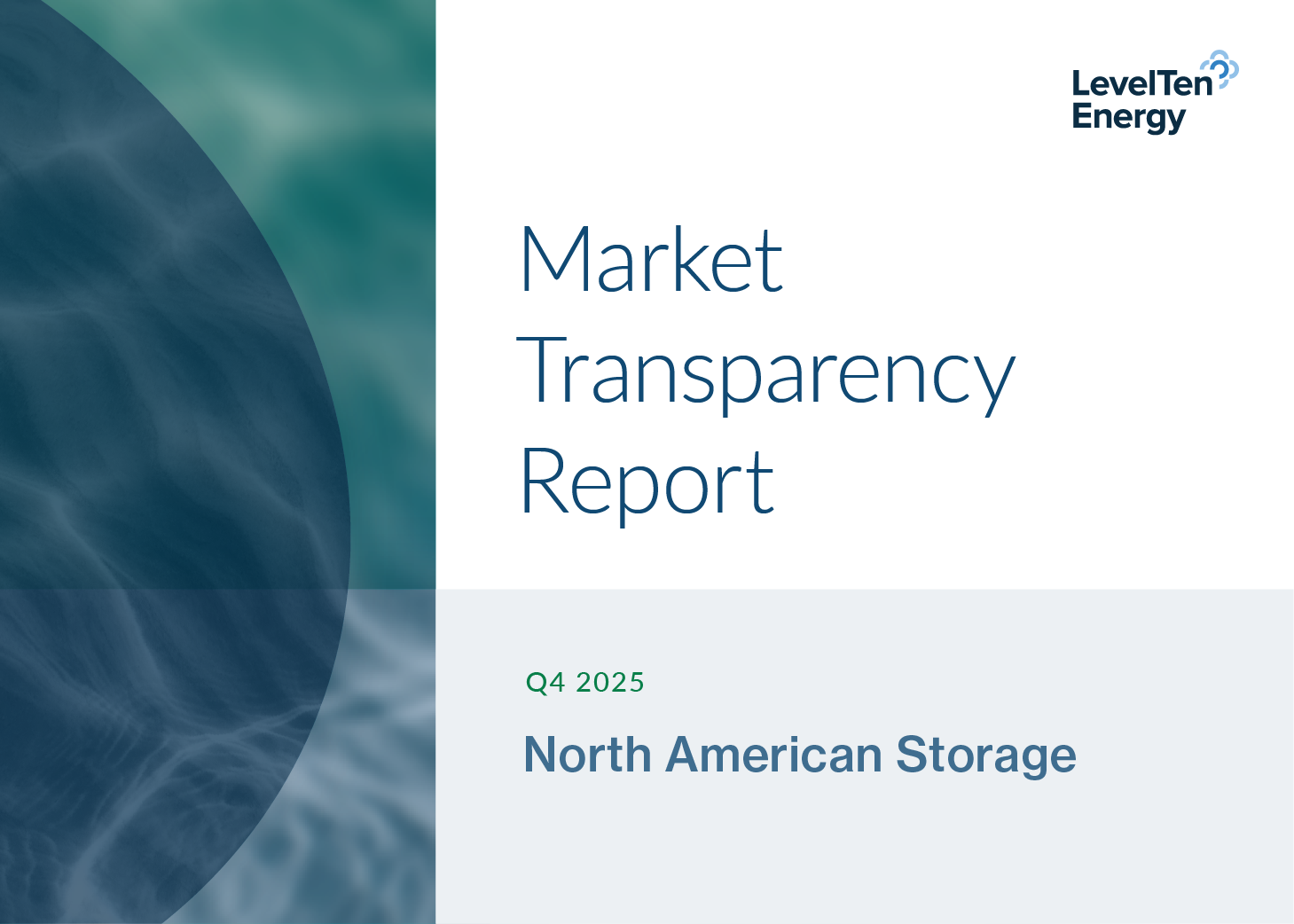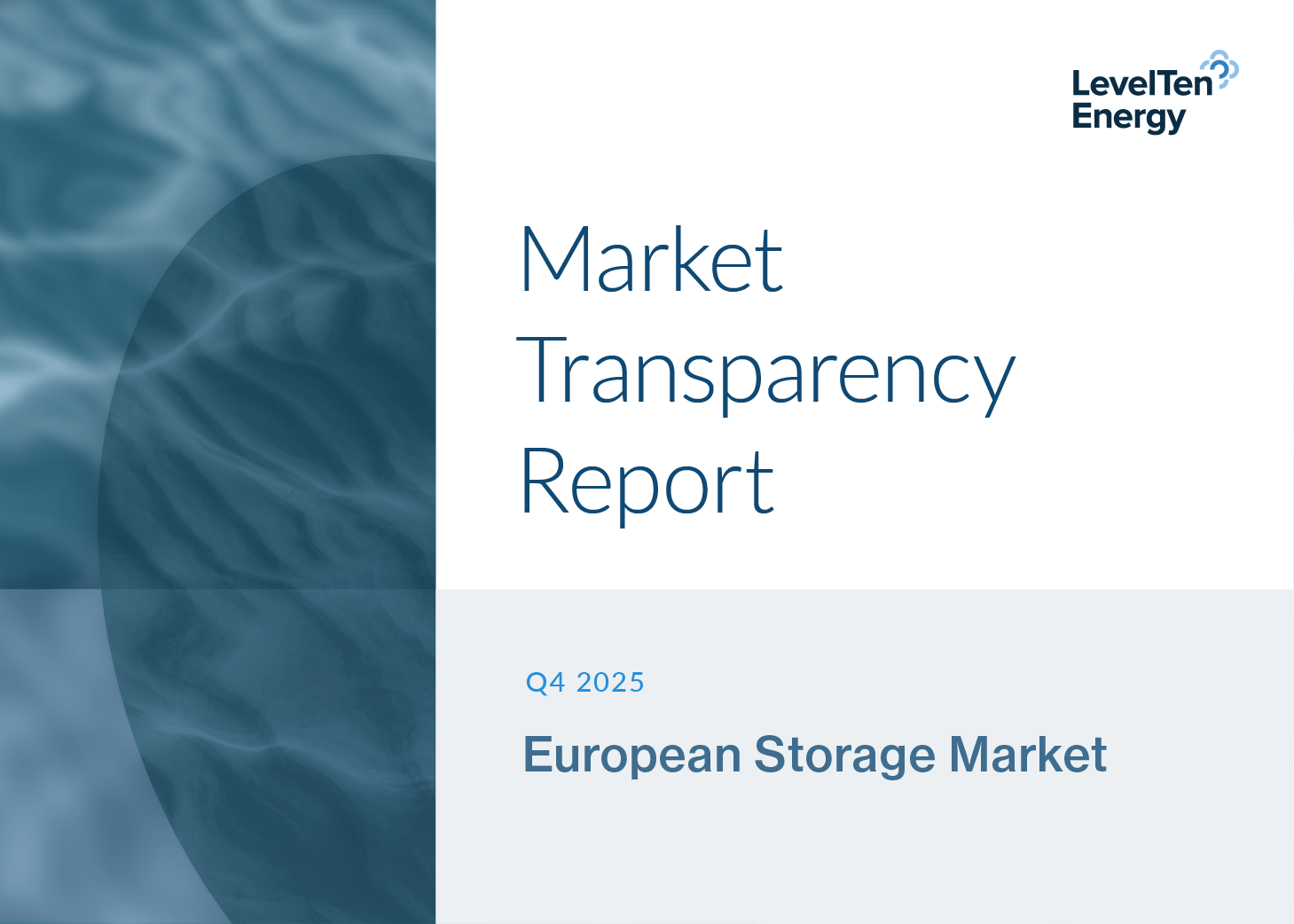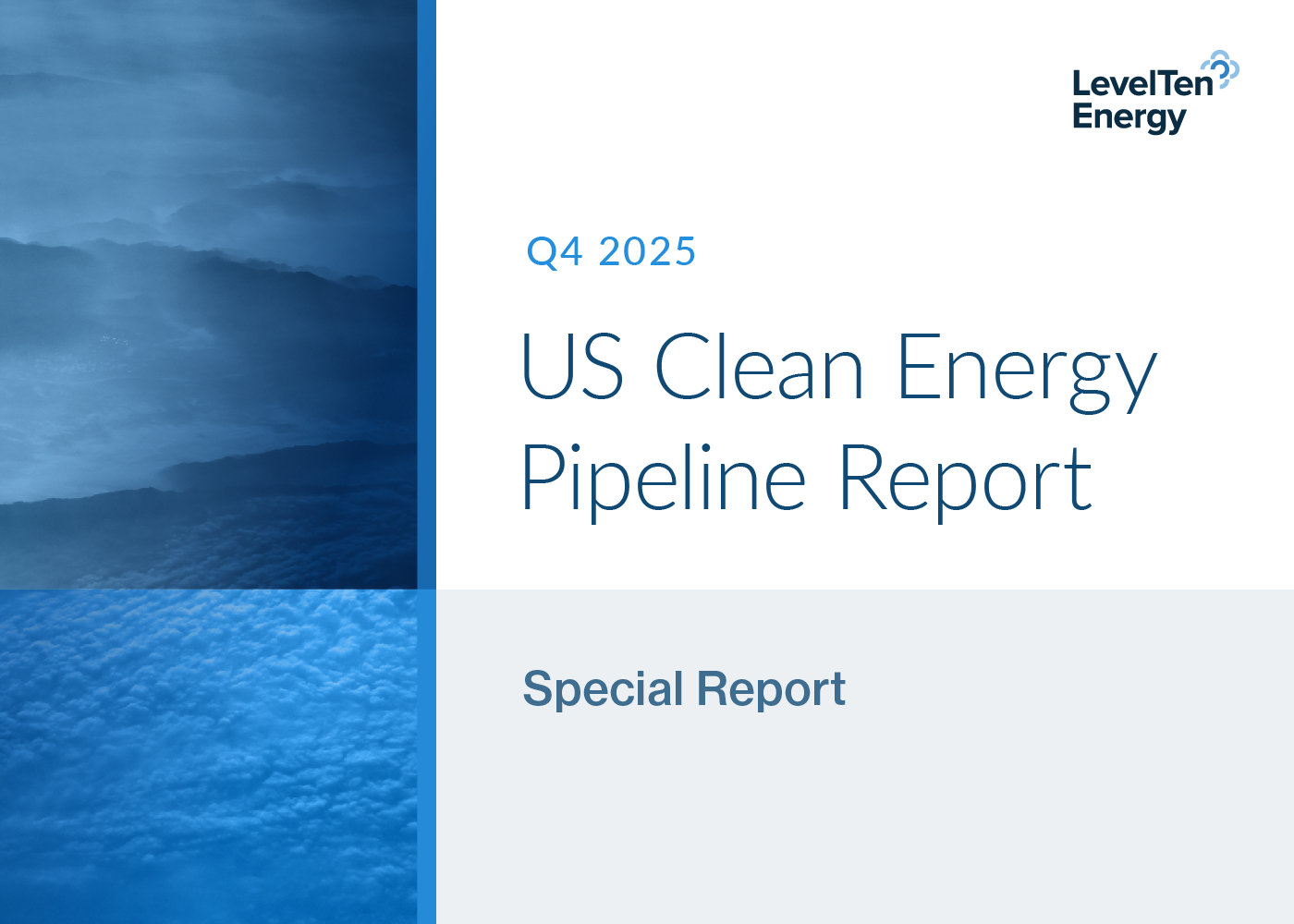LevelTen’s Q2 PPA Price Index Reports showed that the trend of rising power purchase agreement (PPA) prices isn’t slowing down any time soon. PPA prices have increased 30% year over year in North America, and 47% in Europe. In this time of widespread uncertainty, some corporate buyers are wondering if the best move is to hold off on renewable procurements and wait for things to “settle down.” While such sentiments may seem reasonable, a thorough look into the forces shaping today’s market makes one thing clear: for buyers, there’s no reason to wait to secure a PPA.
Rising development costs, constrained supply, and escalating demand have all contributed to the rise in PPA prices, and many buyers — even the largest and most experienced — are facing challenges. But the value of entering into PPAs remains strong, and with some preparation and flexibility, deals are getting done. The market forces putting upward pressure on PPA prices will not be resolved in the near-term. And as more organizations commit to buying clean energy, competition for the best deals will only grow.
Development Costs are Rising
As Bloomberg notes, “Relentless price declines over the past decade made renewables the cheapest sources of electricity in much of the world. In the past year, though, prices for solar panels have surged more than 50%. Wind turbines are up 13%, and battery prices are rising for the first time ever.” Inflation and supply chain volatility are leading to rising development costs across the board:
- According to the IEA, prices of many minerals and metals that are essential for clean energy technologies have recently soared: the prices of lithium and cobalt more than doubled in 2021, and those for copper, nickel and aluminum all rose by around 25% to 40%.
- The price of polysilicon, a critical component of PV modules, rose over 200% in 2022 amid supply shortages
- Inflation, combined with a lack of workers with the right skills, has pushed up labor costs in North American and European markets
- Driven by pandemic-related disruptions, international container freight rates have increased dramatically since January 2019; solar PV is one of the most affected industries due to the high concentration of solar panel manufacturing in China.
With the cost of commodities, labor, and other critical project inputs changing on a near-weekly basis, setting a long-term PPA price with confidence has become a tall order. To achieve their internal rate of return, developers and asset owners have had to increase PPA prices to accommodate mounting costs.
Renewable Supply Will Remain Constrained
As attaining permitting and interconnection approvals grows more difficult in many markets, committing to a firm commercial operation date has grown harder too. According to the American Clean Power Association, compared to deployments in the first half of 2021, installations in the first six months of 2022 are down by 25%. This is the largest drop in installations over a six-month period the industry has experienced since 2018. When it comes to new capacity entering the pipeline, the drop is even more drastic. In Q2 2022 there was 43% less capacity starting construction, and 53% less capacity entering advanced development, compared to Q1 2022.
The truth is that most of these headwinds aren’t going to resolve any time soon. Interconnection approval processes lack efficiencies and are experiencing an overwhelming number of requests in many markets. And while interconnection queue overhauls are being undertaken in PJM, MISO, Italy, and other markets, these efforts take time, and it will take a few years for existing queue backlogs to clear out. Available land is also becoming more scarce in North America and Europe, and permitting restrictions are prevalent on both continents. Although permitting reforms are underway in many markets, they, too, will not be implemented nor materially impactful overnight. In the meantime, permitting and interconnection frictions will continue to slow the development of many projects for the foreseeable future.
PPA Demand Will Continue to Rise
From a brand perspective, the value of a PPA continues to grow. Sustainability teams are looking to make a clear and measurable impact that will meet stakeholder and investor standards — particularly as scrutiny around unbundled RECs and GoOs grows. As pressure mounts for companies to decarbonize and contribute to the broader energy transition, PPAs with new-build projects will continue to stand out as the gold standard, because they help bring new projects to life that would not have otherwise come to fruition without the commitment from the corporate buyer. In Europe, the war in Ukraine has only increased the brand value of contributing to Europe’s energy transition.
From a settlement value perspective, the rise of wholesale electricity prices has blunted the impact of rising PPA prices in many markets. Projected Settlement Values (PSVs) are calculated in the LevelTen Energy Marketplace by taking the “capture price” (what the project is expected to earn per megawatt hour of as-generated energy in the wholesale market) and subtracting the PPA price. In North America, PPA prices are rising, but so are capture prices, which means settlement values are holding in many markets. In Europe, the value landscape is more complex. But with European energy market volatility expected to remain through mid-decade, the value of locking in energy prices and securing renewable supply cannot be ignored.
More broadly, utilities have decarbonization targets of their own to hit, and as sophisticated, credit-worthy buyers, they provide real buyer competition for available renewable capacity. In Europe, government auctions are also taking clean energy supply that might have otherwise been available to corporate buyers. With the importance of PPAs to companies’ sustainability goals holding strong, walking away from a PPA negotiation due to moderate price adjustments from developers is not the solution to meeting long-term decarbonization commitments.
PPA Prices Will Likely Continue to Rise
The challenges making it difficult for supply to keep up with demand, including land availability/permitting, transmission buildout, and interconnection reform, will take years to resolve. As buyer competition mounts and developers continue to navigate a challenging and uncertain landscape, upward price pressure will almost certainly continue. Even if PPA prices stabilize or decline, it’s very unlikely they’ll return to pre-2020 levels. Buyers waiting on the sidelines for ‘better’ prices may end up waiting a long time — as more competition continues to enter the market.
Buyers and Sellers are Seeking Reduced Risk and Greater Certainty
Current market conditions are forcing renewable transactions to evolve. With an expanding list of offtaker options that includes utilities and governments, developers have become more selective when it comes to the buyers they choose to work with. Understandably, developers prefer experienced offtakers with high credit and fewer contractual demands that place added risk on them. For buyers, securing the right deals amid steep competition often requires being flexible on PPA price and contractual elements related to risk sharing.
Particularly in today’s uncertain environment, there are elements of PPAs that can matter more to buyers than price alone. Most buyers are looking for de-risked projects that are developmentally mature and have a high likelihood of reaching their target commercial operation date. This means projects with a high Development Maturity Score on the LevelTen Energy Marketplace can fetch a premium due to lower risk and a higher likelihood of completion. Projects with line of sight to interconnection or with permitting approvals in hot markets, for example, may be worth paying more for over projects with a lower PPA price but with greater uncertainty in these key development areas. Now more than ever, we encourage buyers to look at projects holistically to ensure they secure the PPAs that will allow them to reach their goals.
How Buyers Can Navigate Today’s Market
Even with the challenges and intricacies of today’s renewable landscape, PPAs are getting signed on a weekly basis. At LevelTen, we strive to reduce transactional frictions and help buyers and sellers understand how they can succeed. With the many challenges developers are facing, buyers should prioritize flexibility and understand that a price increase (within a reasonable threshold) during PPA negotiations is most often reflective of developmental headwinds rather than developers looking to increase their returns. If you’re a buyer with a PPA in the works right now, even if the projected value of that PPA has dropped or its price has increased by a few $/MWh, we strongly encourage you not to walk away from the negotiation table. It is highly unlikely your team will fare better by starting the RFP process over again.
To maximize the likelihood of success in today’s market, buyers are advised to:
- Prioritize stakeholder alignment and attain as many internal approvals as possible at the beginning of the procurement journey to ensure an efficient RFP processes
- Avoid additional RFP rounds and fluctuating asks to developers — unless truly necessary
- Be prepared for changes to offer price between RFP close and project selection
- Be open to contractual terms that signal a willingness to share risk with developers, such as indexing PPA price to fluctuations in commodities prices
- Be open to extending target COD up to 12 months without penalty as interconnection approvals and permitting hurdles continue to challenge developers
The need for the private sector to lead the global energy transition has never been greater. There is so much buyers can do to succeed in this market and secure the PPAs they need to meet critical climate goals. LevelTen’s network of advisors, and our industry-leading market data and analytics, provides renewable buyers with the edge they need to succeed. To learn more about how your organization can leverage the LevelTen Platform to buy or sell clean energy, please contact us.






